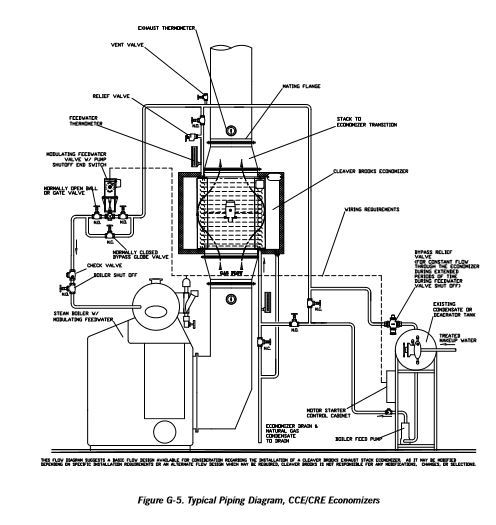firefastball
Mechanical
Hi there,
I'm trying to figure out how can I assess a steam process plant efficiency? not a steam power plant.
I try to scourge through the internet and most of my searches are related to a steam plant which is not my objective.
So consider steam is produced by a 15 ton/hr boiler at saturated 10 bar(a). Feedwater is coming in from the deaerator at 95 degrees C.
The steam is then supplied to a number of autoclaves and no condensate is return back to the system.
Makeup water is coming in at 32 degrees C
The boiler is using Fuel oil.
If I'm going to calculate the boiler efficiency, I would use the below method:
Boiler eff = 15ton/hr X (steam enthalpy @ sat 10 bar - FW enthalpy @ 95 C)/Fuel Oil flow X HHV.
How can I calculate the total steam plant efficiency then?
Does the below equation correct?
Steam Plant Eff = 15ton/hr X (steam enthalpy @ sat 10 bar - Makeup enthalpy @ 32 C)/Fuel oil flow X HHV
How would it change if there is condensate return? Say 50% of steam flow.
Does the total steam plant efficiency is usually lower than boiler efficiency?
The reason is I would like to calculate the increase in efficiency if we do some improvements to the plant.
Thanks. Sorry for the long question
I'm trying to figure out how can I assess a steam process plant efficiency? not a steam power plant.
I try to scourge through the internet and most of my searches are related to a steam plant which is not my objective.
So consider steam is produced by a 15 ton/hr boiler at saturated 10 bar(a). Feedwater is coming in from the deaerator at 95 degrees C.
The steam is then supplied to a number of autoclaves and no condensate is return back to the system.
Makeup water is coming in at 32 degrees C
The boiler is using Fuel oil.
If I'm going to calculate the boiler efficiency, I would use the below method:
Boiler eff = 15ton/hr X (steam enthalpy @ sat 10 bar - FW enthalpy @ 95 C)/Fuel Oil flow X HHV.
How can I calculate the total steam plant efficiency then?
Does the below equation correct?
Steam Plant Eff = 15ton/hr X (steam enthalpy @ sat 10 bar - Makeup enthalpy @ 32 C)/Fuel oil flow X HHV
How would it change if there is condensate return? Say 50% of steam flow.
Does the total steam plant efficiency is usually lower than boiler efficiency?
The reason is I would like to calculate the increase in efficiency if we do some improvements to the plant.
Thanks. Sorry for the long question

